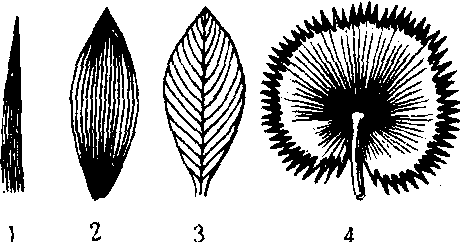平行脉pingxingmai
中脉和侧脉自叶片基部发出,大致互相平行,至叶片顶端汇合的脉序。大多数单子叶植物具平行脉。平行脉又分:直出平行脉,各脉由叶基以平行方式直达叶尖,如稻、麦等的脉序;侧出平行脉,叶片中央有一主脉,由主脉分出侧脉,垂直于主脉直达叶缘,如巴蕉、美人蕉等的脉序;射出平行脉,各脉自叶基部以辐射状分出,如棕榈、蒲葵等的脉序。
平行脉parallel vein
叶脉平行或近于平行排列的一类脉序。平行脉为大多数单子叶植物所具有,有4种形式:
❶直出平行脉。中脉与侧脉于叶尖汇合,如小麦、水稻等禾本科植物的叶脉。
❷弧状脉。纵走的叶脉在叶片中部彼此距离较宽,整个脉序为弧形,如黄精、玉簪等的叶脉。
❸横出平行脉。侧脉由中脉的两侧横出,平行达到叶缘,如芭蕉、香蕉的叶脉。
❹射出平行脉。叶脉自叶柄顶端辐射散出,如棕榈、蒲葵的叶脉。

平行脉序的类型
1.直出平行脉 2.弧状脉 3.横出平行脉 4.射出平行脉